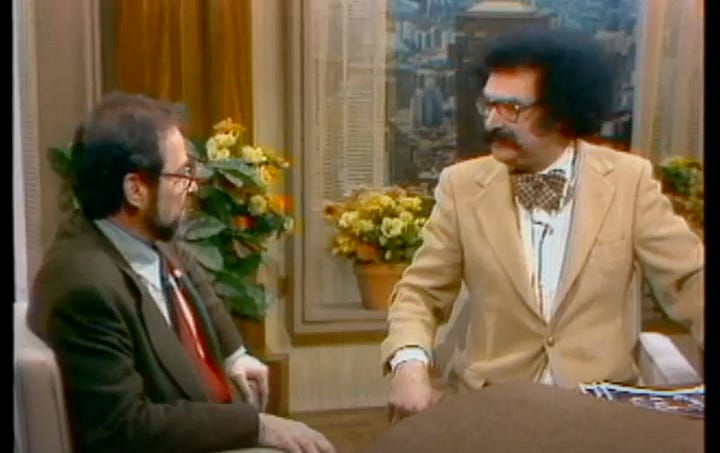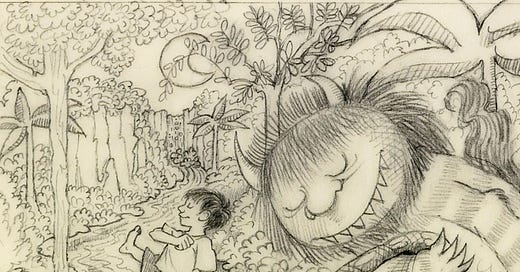“Most people think of children’s books as little-bitty books about Bunny-wunny, and Squirrelly-wuirrelly, and Wolfy-wolfy,” said Gene Shalit to Maurice Sendak in an interview on “TODAY” in October of 1980. “But your books are not like that at all.”
“That’s true,” replied Sendak. “You know that’s true.”
“Why? Is it because children do not like that? Your world of children is different from the average adult’s conception of the world of children.”
“Partly because, I don’t write for children,” explained Sendak. “I don’t set out to sit down and do a book that is for kids. I’m writing a work that comes from myself.”


Two months later, in an interview with TIME contributor, Peter Stoler, Sendak said it again: “I don’t write books for children. I write them for myself. Children happen to like them.”
In January of 2012, just four months before he passed from a stroke, Sendak said it again to Stephen Colbert: “I don’t write for children. I write. And somebody said that’s for children. I didn’t set out to make children happy.”
Later in the Stoler interview, Sendak explained, “My first books were as personal as Wild Things, but I was calling them ‘children’s books’. Once I began Wild Things, though, I began to feel free of the label of ‘children’s book writer.’”
Let’s expand “children’s book writer” to “children’s book creator”. From self-expression and storytelling to marketing and commerce to branding and content creation to intellectual property law and history of literature, few career pursuits are as all-encompassing.
I try to blend illustrations and the words so that each book is a feast for the eye and ear. I want the time that the reader shares with me and my work to be an enjoyable experience—one that will encourage a lifetime of association with pictures, words, and books.
—Steven Castle Kellogg
To be a children’s book creator, whether you’re writing, illustrating, or writing and illustrating, is to choose a vocation that is both selfless and selfish. Your book could be the book that inspires a total stranger to be a lifelong reader. It’s pretty noble to want to share your stories and art with others—offering “mirrors, windows, and sliding glass doors” (to quote Dr. Rudine Sims Bishop) to the next generation. It’s not easy (mentally, emotionally, physically, or financially), but you do it anyway. And, yeah, if you make a couple of bucks from it, and maybe earn a smidge of fame and adulation, that ain’t bad either.
It was exciting to get that first book published. It was as though I was tied up in a gunny sack; and all of a sudden, everything sort of spilled out! All of a sudden, all of this is in front of me.
—Robert McCloskey
It’s a job. A job that requires many hats. To get that job, you need to have more on your resumé than “I love/have/teach children.” It isn’t enough to want to write books for children. Everyone does!
If you want to make a serious run at creating books that children just happen to like, here are a few things you should know.




